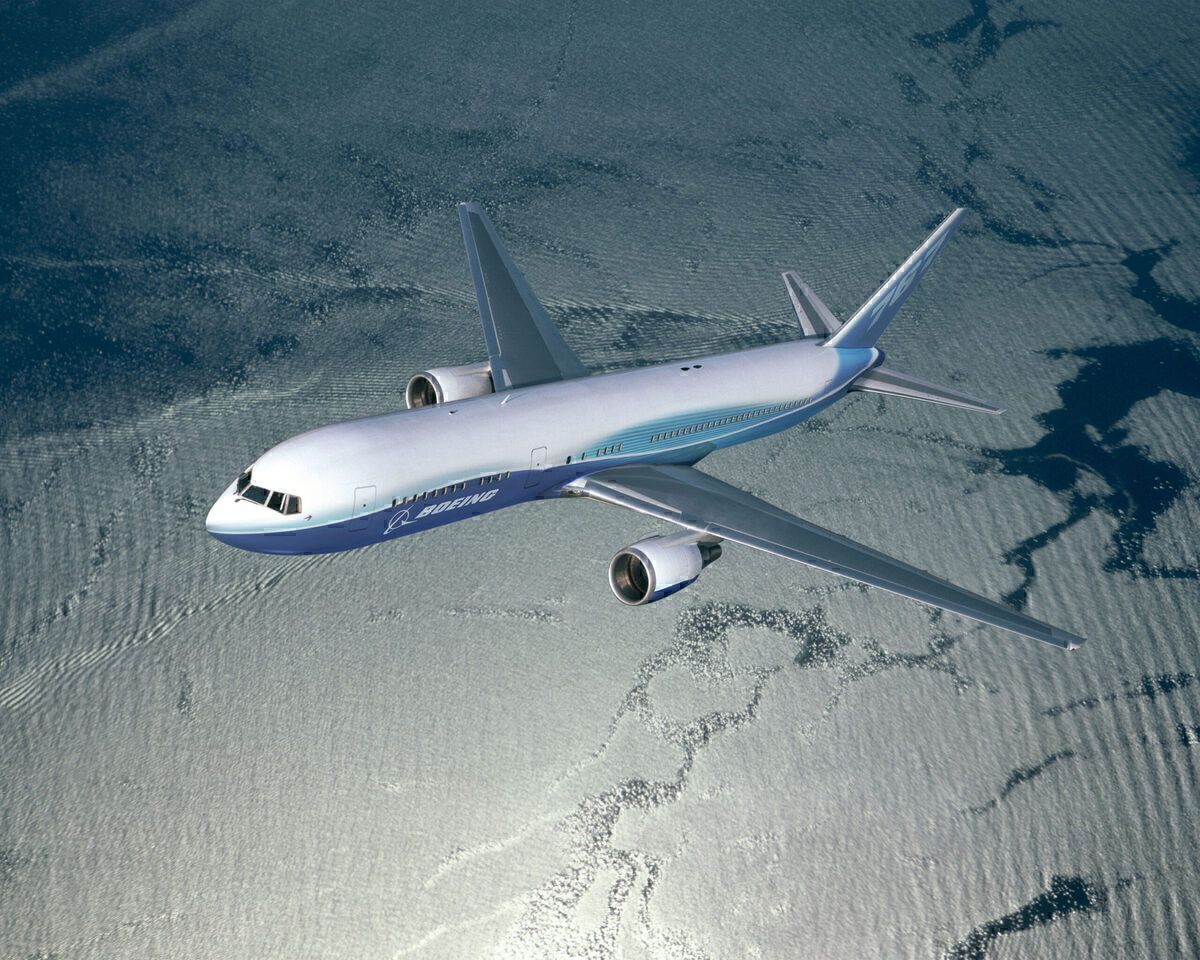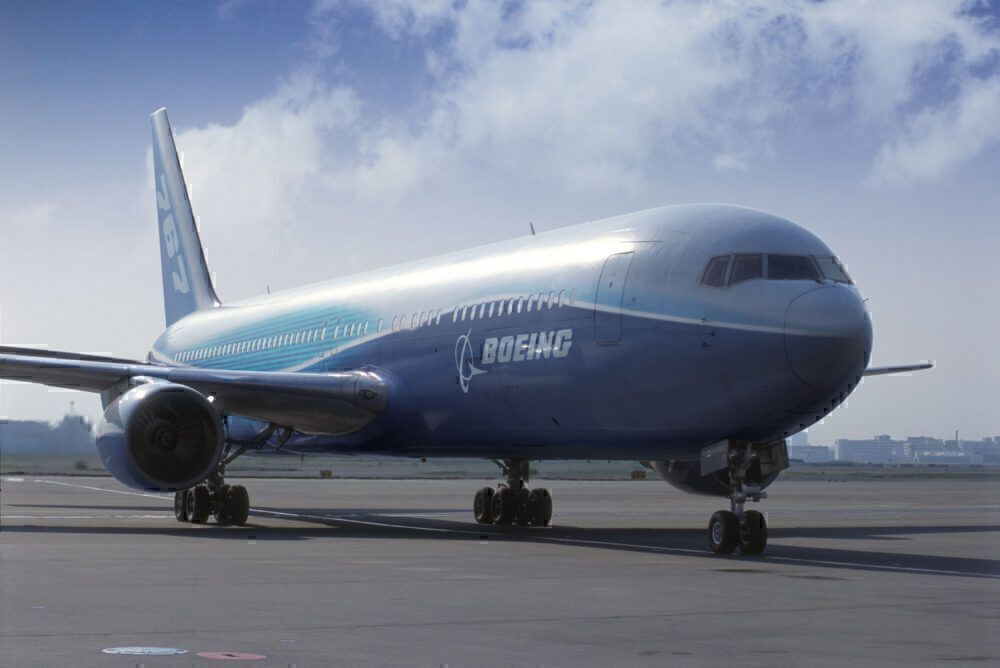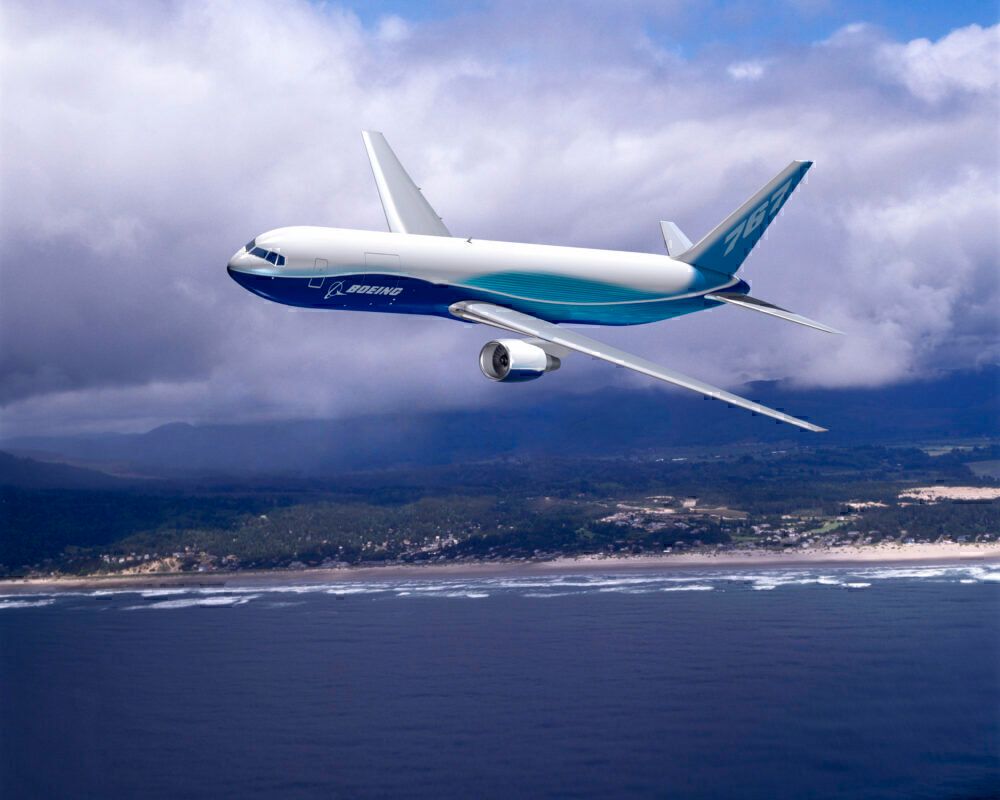The Boeing 767 is a mid to large-size, long-range, wide-body twin-engine jet airliner. The 767 is produced in three fuselage lengths. The original 767-200 entered service in 1982, followed by the 767-300 in 1986 and the 767-400ER, an extended-range (ER) variant, in 2000. Let’s take a look at the development of this significant aircraft and the difference between the 767-200 and the 767-300.
Background and development
Development of the 767 occurred in tandem with a narrow-body twinjet, the Boeing 757, resulting in shared design features that allow pilots to obtain a common type rating to operate both aircraft.
Code-named 7X7, the new wide-body aircraft was intended to replace the 707 and other early generation narrow-body jets. The aircraft would also provide twin-aisle seating, but in a smaller fuselage than the existing 747, McDonnell Douglas DC-10, and Lockheed L-1011 TriStar wide-bodies. In February 1978, the new jetliner was given the 767 model designation.
Boeing says the following on its website:
“The 767 has a long history of leading the way in technological innovation, including such firsts as first two-crew flight deck on a widebody airplane, first to use brakes made of carbon fiber, first airplane to achieve both 120- and 180-minute ETOPS approval, first widebody airplane to offer a choice of three passenger sizes, and first large commercial airplane to use efficiency-enhancing raked wingtips.”
The launch airline for the 767 was United Airlines, and it made its first commercial flight from Chicago to Denver in September 1982.
Extended range and stretched variants
Seeing the potential for the growth of its new widebody jet, Boeing offered an extended-range variant, the 767-200ER. In May 1984, an Ethiopian Airlines 767-200ER set a non-stop record for a commercial twinjet of 6,524 NM from Washington DC to Addis Ababa.
In 1983, Boeing announced that it was building a stretched version, the 767-300 and, in 1984, the 767-300ER. Both variants offered a 20% increase in passenger capacity. The -300 entered service in 1986 and the -300ER in 1988.
Stay informed: Sign up for our daily aviation news digest.
After receiving an order from UPS, Boeing launched a cargo version, the 767-300F, which entered service in 1995. It featured a main deck cargo hold, upgraded landing gear, and strengthened wing structure.
Boeing developed a second stretched variant of the aircraft, the 767-400ER, which made its maiden flight in 1999 and entered service with Continental Airlines in 2000.
Differences between the 767-200 and 767-300
The 767-200 is 159 ft 2 in long and typically seats 216 passengers. It has a range of 3,900 nautical miles. The extended range 767-200ER seats 181 and has a range of 6,590 NM.
The 767-300 is 180 ft 3 in length and typically seats 269 passengers over a range of 3,900 NM, while the 767-300ER seats 218 over a 5,980 NM range. The 767-300F can haul 116,000 lb with a range of 3,225 NM.
Boeing 767 freighter
The 767-300F cargo aircraft is still in production and, according to Boeing, 81 of the aircraft are on order. Boeing also offers the 767-300BCF (Boeing Converted Freighters which have been converted from passenger to cargo configuration. According to Planespotters.net, FedEx is one of the largest operators of the 767-300F, with 96 of the aircraft in service and six more on order.
Have you flown on the Boeing 767? What do you think of the aircraft?



